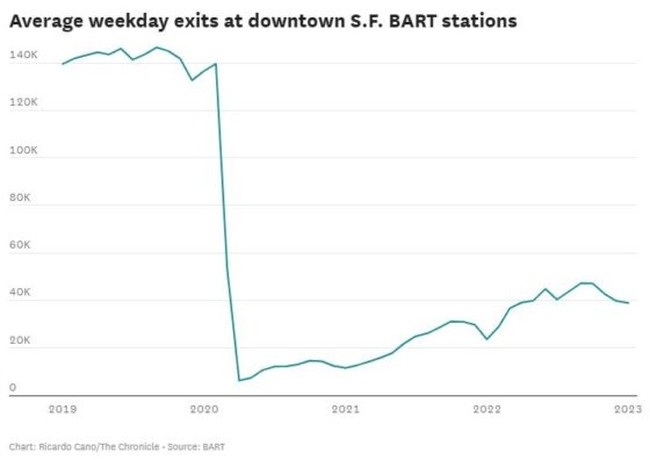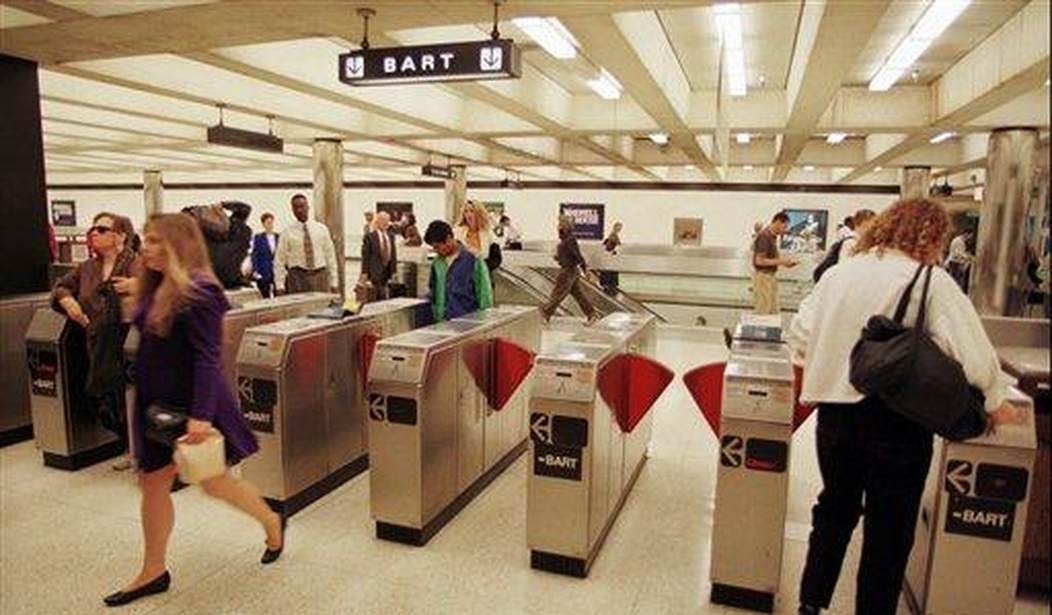Earlier this month we learned that California’s ruinously expensive bullet train system had gone up in price once again. The full system is now expected to cost $128 billion and that’s if it’s completed sometime in 2040. The other bad news about the bullet train was just as worrisome. A new estimate of anticipated ridership for the finished system showed a drop of about 25%.
Declining ridership isn’t just a problem for the rail system of the distant future. It’s also a huge problem for systems that already exist and none has been hit quite as bad as BART, the Bay Area Rapid Transit system which connects the Bay Area. As the San Francisco Chronicle reported today, BART was once the pride of US rail system because it generated more money from fares than any similar system in the US. BART still didn’t break even but in 2019 72% of its funding came from fares which is a lot better than similar systems in New York or Boston for which ridership covers only about half of the cost to operate the trains.
BART ridership was in decline even before the pandemic but since then it has truly dropped off a cliff. Here’s a chart showing pre-and post-pandemic “exits” at downtown stations. These are people who used to ride the trains to work.

The immediate financial crisis was forestalled by some pandemic funding but that is going to run out in less than two years. By that point, the system is either going to need hundreds of millions per year in state funding or a major cutback in service. The cutbacks required would be so severe that they would likely put the remaining ridership into a tailspin.
Its pre-COVID ridership is unlikely to return in the next decade, making BART’s future especially perilous as transit agencies across the Bay Area and the nation project massive budget shortfalls.
In its worst-case scenario, BART would impose mass layoffs, close on weekends, shutter two of its five lines and nine of its 50 stations and run trains as infrequently as once per hour. Those deep cuts, agency officials say, could lead to the demise of BART.
A Bay Area without BART, however unimaginable, would further fragment public transit, worsen traffic congestion on highways and bridges, and erode the natural flow of a region so profoundly shaped by the rail system…
These days, more than 160,000 people per day ride BART during the middle of the week, now the busiest time to ride the system.
Still, that ridership amounts to about 40% of the typical weekday in 2019.
The pandemic highlighted BART’s high dependence on office commuters bound for downtown San Francisco. Before the pandemic, the four stations on Market Street accounted for more than one-third of weekday exits across the 50-station system. As of January, with downtown still hosting a fraction of its previous in-office workforce, those downtown stations — Embarcadero, Montgomery, Powell and Civic Center — saw 28% of their pre-pandemic exits, according to BART data.
BART’s overall ridership recovery during the pandemic has mirrored downtown’s office occupancy levels.
In other words, the recovery of BART is dependent on a return to pre-pandemic levels of in-office work. But that seems very unlikely given the decline around the country, a trend Derek Thompson of the Atlantic called “peak office.”
I suppose it’s still possible those workers could be lured or forced back to the office but it’s hard to see why that would happen. As I’ve pointed out before, the decline of office work has benefits for both workers and employers. Workers get to avoid the hassle of commuting one or two days a week, saving them time and money and giving them a bit more freedom with their coffee breaks. Meanwhile, employers can potentially save significant amounts of money on expensive commercial office space. Office space is usually the single largest item in their annual budgets after salaries. So chances are good this new trend is not going to reverse itself, especially not for the kind of white collar workers who populate the Bay Area.
So the bottom line is that very soon the BART system is going to need to go to Sacramento and beg for something like $300 million per year in order to maintain current levels of service. And if they can’t get it, then we’re likely to see the system forced to make major cuts could lead to further decline.








Join the conversation as a VIP Member